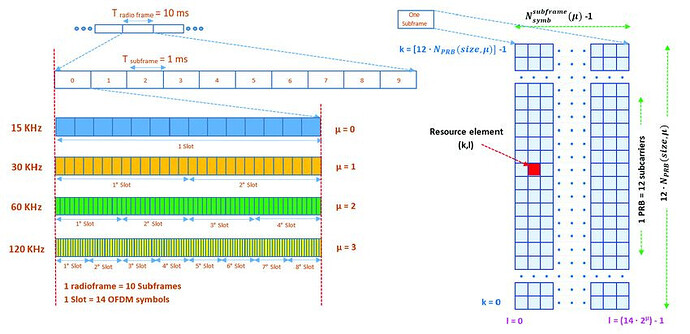Troubleshooting scheduling delays and Physical Resource Block (PRB) allocation in Bandwidth Part (BWP) at the Layer 1 (L1) level in 5G systems requires a systematic approach.
I would like to share my thoughts on step-by-step guide to help anyone working in 5G scheduler identify and address above mentioned issues:
- Identify the Problem: Determine if the scheduling delay is due to processing, signaling, or resource availability issues. Check if PRB allocation is consistent with the scheduling decisions.
- Check Scheduler Configuration: Verify that the scheduler parameters, such as weights, priorities, and scheduling policies, are configured correctly. Ensure that the scheduler is considering the correct QoS requirements for different services.
- Resource Availability: Ensure that there are enough PRBs available in the BWP for allocation. Check if the BWP configuration (size, location) is appropriate for the cell’s traffic load.
- CSI Reporting: Verify that Channel State Information (CSI) reporting is accurate and timely. Inaccurate CSI can lead to suboptimal scheduling decisions.
- Interference: Investigate if interference, especially from neighboring cells or users, is affecting PRB allocation and scheduling delays. Adjust antenna settings or scheduling strategies to mitigate interference.
- UE Capability: Check if the user equipment (UE) supports the features (e.g., MIMO, beamforming) used in the scheduling decisions. Incompatible UE capabilities can lead to scheduling delays.
- Handover and Mobility: Evaluate the impact of handovers and user mobility on PRB allocation and scheduling delays. Ensure that handover procedures are optimized for minimal impact on scheduling.
- Signaling Overheads: Reduce signaling overheads by optimizing control signaling messages and procedures. Minimize unnecessary signaling messages that can cause delays.
- Logging and Monitoring: Use logging and monitoring tools to track PRB allocation and scheduling delays. Analyze the logs to identify patterns or anomalies that require attention.
- Testing and Validation: Perform tests and simulations to validate the scheduler’s performance under different scenarios. Use test results to fine-tune scheduler parameters and improve performance.
By following these steps and carefully analyzing the performance of the scheduler at the L1 level, one can troubleshoot scheduling delays and PRB allocation issues in 5G systems.
I hope this article is helpful in some ways to troubleshoot scheduler effectively.
any questions/comments are welcome to improve.
LinkedIn: ![]()
